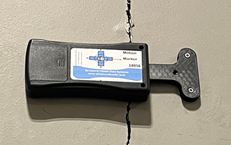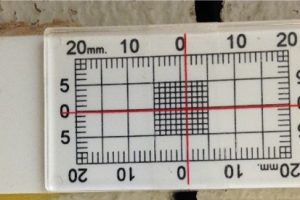- (254) 733-6954
- info@structuralhealth.tech
- PO Box 81, McGregor, Texas 76657
The TOP 12 Advantages of Automated Monitoring
The advantages of automated electronic crack monitoring over traditional static analog gauges are numerous and, in the end, economically superior. This paper covers the great benefits of electronic devices. For a full a explanation of the cost savings potential, please see our article on the economic benefit of automatic crack monitoring:


The TOP TWELVE Advantages Are:
Hourly readings provide a rich, robust set of data that captures the full range of daily movement that a crack experiences. Where manual gauges are read in person often only once per month, autonomous remote devices capture 720 measurements per month and are not subject to mis-reads due to time of day, temperature, weather or technician error.
With automatic measurements a user no longer has to keep track of measuring devices on a weekly or monthly schedule. There is little risk of missing a reading. Furthermore, to the risk of variable readings from different techs is eliminated.
The hourly remote readings can be easily correlated to rainfall, temperature, and other weather events that have known impact on cracks.
The download feature of databased web access allows for data elements to be downloaded into an EXCEL spreadsheet or other direct data base protocol software for easy custom handling and presentation.
The regular timing and high volume of data means that readings are no longer tethered to misaligned and timed site visits. Smooth regular curves result from hourly recording.
Multiple engineers and technicians introduce varied ways of reading data from manual gauges. Not only are many locations challenging to access, the angle, precision mindset, and site familiarity often impact quality and sometimes the validity of data. A consistent read every time, every hour puts this concern to rest.
The fidelity of manual analogue measurement gauges is 0.5mm (and as reported elsewhere dependent on the eyeballs doing the reading. Autonomous gauges are micro process aligned to read at 0.21mm precision. They read the same all the time, every time and are over twice as precise.
The computer database structure enables thresholds of interest and alarms to be set and notifications to be sent. Most any item of interest that can be recorded can have a notification set to email or text interested users.
The ability to track and record movement over years is reported further in our article: Automated Electronic crack monitoring – When long term monitoring makes sense. Structural Health Data System devices have been in place consistently reading and recording non-stop for over 5 years with solid results and reliability, establishing a clearer picture of crack movements.
The cost savings with autonomous remote electronic crack measurement cannot be overstated. Not only is there peace of mind knowing data is collecting without effort and is immediately accessible, but the installation effort is essentially the same and there are no regular subsequent site visits or access issues. Reduced site visits improve safety and can improve productivity by freeing up personnel for other projects.
The “Richness” (quality and depth) of the data has been referred to throughout this document. But the value of this characteristic cannot be fully appreciated until seen in action. The alignment of temperature, rainfall, horizontal movement, with vertical movement on an hourly increment creates a tremendous data base that can be accessed and manipulated to understand building performance any time day or night 24/7/365.
A catchup feature stores the prior 96 readings and fills in readings that may have been lost to poor transmission, power outage, Wifi outage, etc. The “Catch-Up” feature provides technicians time to get a system back on line if an off-line alarm is received.
Bottom Line:
While there are many advantages that come with electronic crack monitoring, we always come back to a bedrock principle:
Robust, accurate data that provides confidence and peace of mind in understanding what is moving

